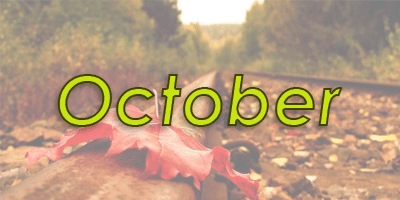Below we’ve added some tips to help you keep on top of your allotment. To make it easier we’ve divided them up month by month. Of course we know there are many more tips and advice you could use and provide, so if you’d like to add your own advice to our tips, let us know in the comments below and we’ll make sure we get them added. Just click the month below to expand the tips.

Despite shorter days and colder temperatures there are still plenty of jobs to be getting on with. If bad weather keeps you indoors then there is lots of potting on and sowing that can be done.
HARVEST
Keep picking those sprouts They’re sweeter after a cold, hard frost.
Leeks and parsnips still in the ground can also be harvested.
Sprouting broccoli and witloof chicory should be ready.
SOW UNDER COVER
Early season leeks, lettuces, broad beans, peas, cut-and-come-agains, radishes, and onions
can now be sown under cover
PLANTING
Garlic cloves and onion sets can be planted in pots of compost in the greenhouse or directly outdoors in warmer areas
DIG
If the soil is dry enough, prepare it by digging it over and letting the frost break down the clods of earth.
PRUNING
Free-standing apple and pear trees can now be pruned. Spurs can be thinned out on step-overs
espaliers, and cordons.
STORAGE
Check your stored fruit and vegetables and remove any plants that have turned bad to prevent them contaminating healthy ones.
ORDERING
Check out seed catalogues and online stores. Get your orders for plants, tubers, and seeds in now to avoid disappointment later in the season.
GENERAL TASKS:
TASKS TO BE GETTING ON WITH OUTDOORS:
After Mid-February, as long as the weather is behaving (15 deg C) you can think about sowing your early vegetable seeds.
Early lettuces, early carrots, broad beans, early peas (Meteor and Feltham First) can be sown out in prepared seed beds, or to be safe you can start your peas in a greenhouse.
You can also sow your Summer cabbages (Prime for example), spinach and turnips.
You can plant out shallots, Jerusalem artichokes and garlics now, but shallots would benefit from being covered with a cloche.
While they’re still dormant, you can prune your pear and apple trees.
Raspberries and other cane fruits, as well as fruit trees can also be planted out in February.
Check over your chitting potatoes rubbing off any unwanted eyes leaving 3/4 well places shoots. And make sure they’re covered on any frosty nights.
General catch up following January including digging over, creating some leaf mould heaps.
Double check your sheds for any splitting in the wood following the wet and cold. Also check your greenhouses (any splits in plastic sheets and any cracks etc in glass panes.) Now is also a great time to give your greenhouse a good clean.
Wash and sterilise your trays and pots.
Check for any left over small potatoes in last years beds and remove them to avoid spreading any disease.
You can also cover your beds with some dark sheeting (plastic or fleece) to warm the ground for a few weeks before sowing.

This is an exciting month for gardeners. It becomes possible to spend longer outside, wildlife
comes out from hibernation, and the garden feels as though it is starting to awaken fully from its winter slumber
COVER UP
Cover bare ground with weed fabric to warm up the ground prior to planting and to prevent weeds germinating
BURY TUBERS
Early potatoes can be planted in the ground now. Dig out a trench 25cm (10in) deep and plant
tubers 30cm (12in) apart, then cover with soil
PLANT
Fruit trees can be planted now. Any later and they will need extra watering to get them established through any dry periods.
WEATHER WATCH
Watch out for frosts and be ready with a fleece to cover any vulnerable seedlings.
BRIGHT STEMS
Swiss chard and beet start to re-generate this month. Harvest their fresh leaves and young
succulent stems.
SOW UNDER COVER
Chillies aubergines, tomatoes, cauliflower, and beetroot can now be sown under cover
SOW OUTSIDE
Carrots, parsnips, spinach, and lettuces should be sown outside now
PRUNING
Cut back all of the fruiting canes from the previous year’s autumn raspberries, Blueberries should have a third of their older wood removed.

This month can be a tricky one for gardeners as they dodge April showers, while the weather can
fluctuate between warm sunshine and cold frosts. One thing’s for sure, though: there’s never a dull moment in the kitchen garden this month.
SOWING INDOORS
Melons, cucumber sweetcorn, fennel, courgettes, endives, runner beans, French beans, broad beans, kale, cauliflowers, and cabbages should now be sown indoors.
SOW DIRECTLY OUTDOORS
Broad beans, carrots, radishes, beetroot, lettuces, and kale should now be sown directly outdoors
STRAWBERRIES
Apply some force and place strawberry plants under a cloche to get an early crop next month.
ASPARAGUS
Young, succulent spears of asparagus should be ready for harvesting. Cut through the stems when
they’re about 12cm (4’zin), just below the surface of the soll
PRUNE
Stone fruit such as plums cherries, apricots, and peaches can be pruned once flowers and leaves start to appear. Avaid pruning them when they are dormant
PEST WATCH
Hang pheromone traps on your apple and pear trees to protect them from codling moth damage.
EARTH UP
The emerging stems of potato plants should have the soil pulled around their base to prevent tubers near the surface going green and to give them more room to develop tubers
TASKS TO BE GETTING ON WITH OUTDOORS… AND IN THE GREENHOUSE OR POLYTUNNEL: GENERAL TASKS:
It’s starting to get busy on the allotment as May breaks. The first month of summer and as the weather is really starting to warm up and there is loads to do in preparation for the summer ahead. May can easily catch us out with is variable weather, from mini-droughts and heatwaves to frosts so it’s always a time to be weary.
Earthing up potatoes once the shoots are around 25cm above the ground, this will help any new tubers to grow under the soil and avoid them turning green as the plant grows taller. Try to leave about 5cm of shoots showing so the plant has enough foliage to continue growing.
Sow French beans, runner beans and squash outdoors but remember to be weary of those late frosts.
Plant out strawberries and line the bed with straw, the aim of this is to lift the fruit off damp ground and to stop soil splashing on to the ripening fruit – which encourages rotting.
Time for any courgettes, summer cabbages and leeks to be planted out.
Plant corn, plant in blocks as they are wind pollenated and also the the outer plants will help shelter the inner plants from high winds, here’s a good guide on block planting corn.
Netting soft fruits to avoid them being eaten.
Some outdoor varieties of tomato seedlings can be planted out.
Peppers, chillies, aubergines and cucumbers can get their final resting places inside. Really keep an eye on them when small to make sure the hotter days don’t fry them. Some chillies can even be moved outdoor, capsicum pubescens and Ethiopian pepper trees can withstand slightly cooler climates but still need warm sunny locations.
Plant out tomatoes seedlings.
Construct / repair any rainwater collection systems you may have to get any water-butts full before the warm months.
Regular hoeing to fend off the weeds.
Set up poles for French and runner beans.
Watch out for black-fly on broadbeans, green-fly on peas, carrot-fly on… well… carrots. For black-fly and green-fly, you can squish by running your forefinger and thumb up the stems, or use soapy water.
GENERAL TASKS:
TASKS TO BE GETTING ON WITH OUTDOORS:
Sweetcorn planted in blocks (see May’s guide for more info on planting in blocks).
Plant out summer cauliflowers, courgettes, pumpkins, artichokes.
Sow outdoors beetroot other leafy lettuce crops, try to sow in a slightly shady area as full sun can create a bitter taste.
Thin out carrots to avoid over crowding and continue planting new rows.
Plant out celery, celeriac, marrows, pumpkins.
Peppers and chillies can be planted outdoors in a sunny spot.
Winter brassicas can be planted now for a winter crop.
There are no more worries of frost catching us out now that we are in June and with the longer sunnier days come more opportunities to get out on the allotment.
Protect carrots from carrot fly and cabbages from caterpillar damage by
covering the crop with Envirofleece or Enviromesh.
Remove any onion or garlic scapes (on hardneck garlic varieties) in order to focus all
of their energy into producing a larger bulb rather than flowering.
Hoe borders on a regular basis to keep on top of those weeds.
Continue to train/fan fruit trees.
Continue to earth up potatoes not ready for harvest, harvest early potatoes – these are normally ready from 10 weeks after planting.
Inspect fruit bushes and trees for pest and diseases, and treat as necessary. Fruit cages need building or repairing to help keep the birds away from the soft fruits when they ripen.

An exciting month in the garden with so much happening. The garden should look at its most
colourful and lush in July, packed full of flowers, vegetables, and fruit.
SOFT FRUIT
There’s still lots to harvest, including late strawberries and gooseberries, redcurrants, blackcurrants and blueberries. Some early blackberries could be ready too
SUPPORT
Over-laden branches such as those on fruit bushes may need support with string and canes to prevent them breaking under the strain.
PRUNING
Soft fruit bushes will benefit from having their new growth pruned back to five leaves to allow more sunlight into the canopy and help the fruit ripen.
TOP FRUIT
Peaches, apricots, cherries and early varieties of plums, apples, and pears should now be ready for picking.
WATERING
Stay on top of the watering and look out for any flagging plants. Those in containers or greenhouses may need watering at least once a day.
GREENHOUSE
If you are lucky enough to have a greenhouse, remember to open doors and vents to prevent it overheating during midday
POTATOES
Second earlies should be ready for digging up now. Remember to keep earthing up maincrop potatoes around the bases of their stems.
SOWING
Continue to sow carrots radishes, and lettuces every few weeks to ensure regular crops to harvest over the next few weeks
RASPBERRIES
Cut back the fruiting canes of summer raspberries. Tie in the new canes that will provide the fruit the following year.

With lots to harvest and sow, August is possibly the busiest month. Stay on top of the weeding and watering to ensure bumper crops
HARVEST
Sweetcorn is ready to harvest when tassels turn brownish and when milky liquid runs from a kernel when you stick a fingernail into it Carrots, beetroot, radishes, and lettuces should also be ready
KEEP CUTTING
Remember to keep cutting cut-and-come-again salad leaves to encourage more to sprout
KEEP PICKING
Peas, beans, tomatoes chillies, and courgettes need to be picked to ensure they continue to crop
DIG UP
Continue to dig up potatoes
Harvest onions when their foliage turns brown and wilts. Leave to dry in the sun for a few days before storing or cooking
STORING
Beans and peas can be frozen.
Maincrop potatoes should be stored somewhere dark and dry
PESTS AND DISEASES
Watch out for blight on tomatoes and potatoes Remove infected growth immediately
WATERING
Stay on top of watering during dry spells.
FEEDING
Give fast-growing crops, such as courgettes, pumpkins, tomatoes, and cucumbers, a weekly liquid feed.
SOWING
Continue to sow radishes lettuces, spring cabbages, turnips, rocket, kohlrabi, oriental vegetables, and overwintering onions.
Make your last sowing of carrots for the year too
SUN SCORCH
Prevent the curds of cauliflowers scorching by bending outer leaves over the centre to create shade.
FRUIT
Harvest blackberries, hybrid berries, perpetual strawberries, peaches apricots, figs, and cherries.
Early apples and pears should also be ready.

This month heralds the start of a new season, as the nights drain and the temperatures drop.
However, there’s still lots to enjoy and to keep you busy on the plot as you continue to harvest and make a few last sowings under cover.
BARE SOIL
Dig over bare areas of soil that have been left vacant by harvested crops. Consider sowing
winter green manures
SOW
Overwintering turnips, onions, spinach, winter lettuces, and oriental vegetables should be sown now.
PLANT
Overwintering onion sets and garlic cloves are now ready to be planted
FEEDING
Continue to feed tomato plants, pumpkins, and other fruiting vegetables with a liquid feed that is high in potassium to increase colour and flavour
LIFT UP
Ripening pumpkins and squashes should be lifted off the soil and placed on a patio slab or straw to prevent them rotting
HARVEST
Autumn raspberries should now be ready for harvesting. Early apples and pears will also be ready for picking

This is the culmination of the growing year and traditionally the main month for harvesting and
celebrating the previous season There may be a slight chill in the air, but gardeners can begin to relax as both the growth of weeds and plants starts to slow up.
COMPETITION
If you think you have grown a particularly impressive fruit or vegetable, why not enter a
local or even national vegetable growing competition?
BUILD
Make or buy a compost bin. The simplest type of bin is made fronm nailing three pallets together to form the back and two sides
FRUIT HARVEST
This is the main harvesting season for apples and pears They should be stored in an airy, dark
room until they are required for eating or cooking
PROPAGATION
Take hardwood cuttings of gooseberries, currants, figs and grapevines between now and the end of February.
PROTECT FIGS
Figs may need protection with a fleece if in a cold, exposed area. Remove any fruitlets larger than the size of a pea as they won’t ripen the following year
HARVEST
Pumpkins and winter squashes should be ready for harvesting. They will store for longen if left out in the sun for a few days before being taken in to store
RIPENING
Dig up any remaining tomato plants and hang them upside down in a greenhouse to allow the fruit
to ripen. Ones that don’t ripen can be brought inside and left in a drawer to ripen with a banana.
SUPPORT
Earth up around the bases of Brussels sprouts to prevent the plants from being blown over.

Time to dig out the fleeces and woolly hats again, but November on the allotment can be a lovely
time of year. As the season slows down, it is a great opportunity to take stock of what went well and what went badly in the previous year and to learn from your experiences
KITCHEN LEFTOVERS
Remember to save your fruit and vegetable waste and peelings and add them to the compost heap
PLANT
Bare root fruit trees are best planted now while the soil is still warm from the summer to give them a better chance to establish.
SOW
Broad beans should be sown directly into the soil in mild areas or in modules under cover in cooler areas.
COVER UP
Overwintering brassicas should be covered with fleece to prevent pigeon damage
HARVEST
Winter squashes, pumpkins, late apple and pear varieties, leeks, and parsnips should be ready for harvesting.
CLOCHE
Any remaining root crops such as carrots, celeriac, turnips, and beetroot would benefit from having a cloche placed over them for a few weeks if you don’t intend to harvest them immediately.
PRUNE
Soft fruit bushes such as blackcurrants, blackberries, hybrid berries, redcurrrants, and gooseberries can be pruned from now until March
DIVIDE
Make sure to lift and divide over congested clumps of rhubarb. Replant in well-prepared soil with plenty of organic matter.

Despite the reduced hours of daylight this month, there is a sense of excitement as one year comes to an end and a new one is about to begin. It’s a good opportunity to batten down the hatches and relax by the fire as you peruse your seed catalogues and dream of how next year’s growing season could be even better than this year’s.
RAINWATER HARVESTING
Take advantage of the potential wet winter ahead by installing guttering on your shed and greenhouse, and introducing lots of water butts to store the rainwater.
DIGGING AND WEEDING
Take advantage of dry spells by digging over the soil and removing any perennial weed root
HARD LANDSCAPING
Now is a good opportunity to redesign the structure of your allotment. Consider making raised
beds, seating areas, pathways, compost heaps, training structures, and arches.
PLANTING
Broad bean plants, overwintering onions, winter lettuces, shallots, and garlic can be planted
out now
STAKES
Check that tree ties aren’t too tight around the trunks of fruit trees and that posts and other supports haven’t rotted.
SEEDTRAYS AND POTS
Give all your seedtrays and pots a good clean in preparation for sowing in spring.
ROOTCROPS
Carrots, beetroot, and turnips should be lifted out of the ground and stored. Parsnips can be left in the ground and harvested as required
January, March, April, July, August, September, October, November and December monthly tips are provided courtesy of the RHS and remain their intellectual property. If you found the above tips helpful, then grab a copy of the RHS Allotment Handbook and Planner. Over 200 pages of allotments tips, tricks, guides and how to get the most out of your plot.
